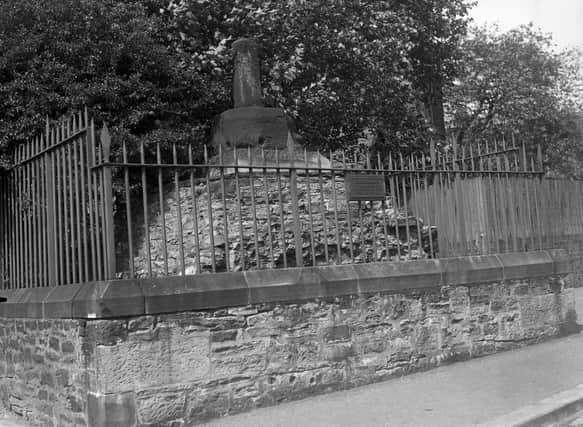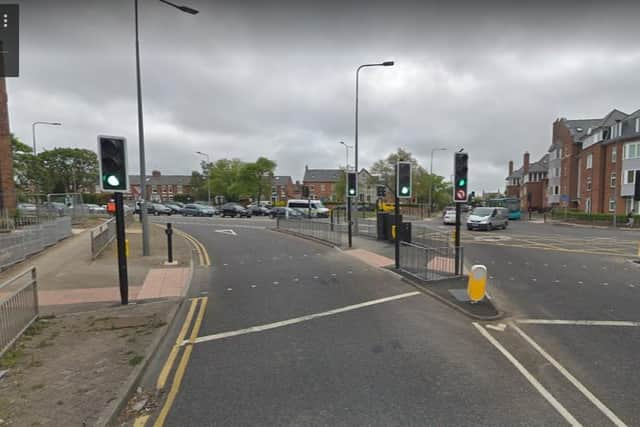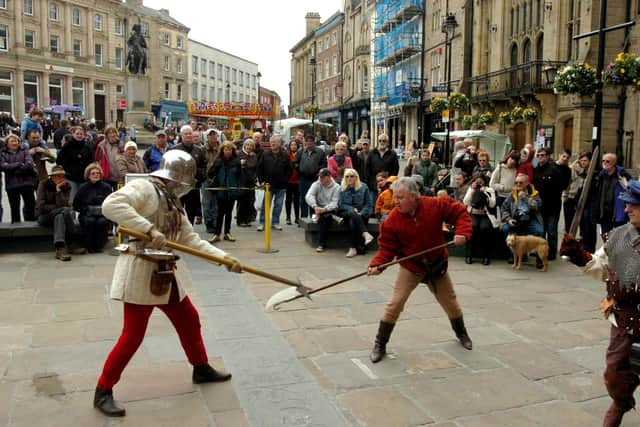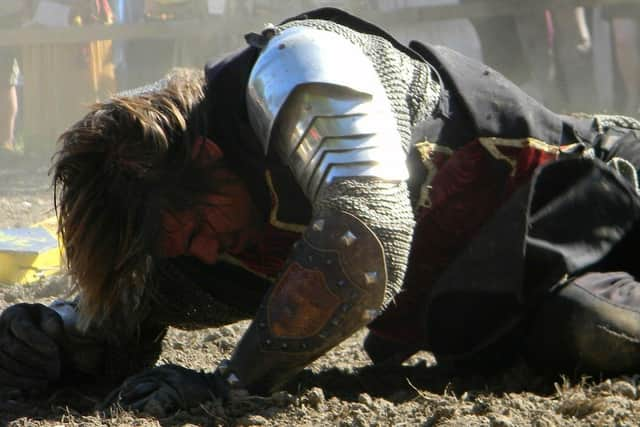The Battle of Neville's Cross - the story of a failed Scottish invasion which saw 1,000 men killed just a stone's throw from Durham


It was pretty spectacular stuff. Today it would have at least been subject to an eight-page pull-out in the Echo. But, eclipsed by even bigger skirmishes, most people have never heard of the battle which took place at what is now a village on the outskirts of Durham.
It was fought between the forces of Scotland, then under the rule of King David II, and those of England Reserves, in the reign of the tough-nut Edward III.
Advertisement
Hide AdAdvertisement
Hide AdSpoiler alert. England won, despite their first team being away in France and being significantly outnumbered.


Edward III
Edward is a king who really ought to be one of English history’s superstars; like Richard the Lionheart, or Henry VIII.
He came to the throne in 1327 aged just 14, after his mother and her boyfriend booted out his useless dad, Edward II. He would reign for 50 years.
He wasn’t a bully, like his granddad Edward I, but he didn’t mind a good dust-up either. He started the Hundred Years War (so-called because it lasted 116 years), but manipulated matters so that all the battles were fought in France.


Advertisement
Hide AdAdvertisement
Hide AdThis made sure that the French were kept out of England, thereby protecting his realm and delaying the introduction of garlic by several centuries.
However he couldn’t do that with the Scots.
Background to the battle.
Just seven weeks before the Battle of Neville’s Cross, Edward led the English to a seemingly impossible victory at Crécy in north-east France - a far more famous battle.


Beforehand this had been unthinkable. The English were both enormously outnumbered and supposedly in need of a lie-in after all that travelling. Think of Hartlepool United playing away at Liverpool, but with only nine players and having walked to Anfield.
However, this didn’t account for the superiority of the English longbow over the French crossbow. Longbows could be loaded much quicker and the French were outmanoeuvred.
Advertisement
Hide AdAdvertisement
Hide AdAfter Crécy the English turned their attention to the Siege of Calais, which took away men and resources, but would be another success. They were in good form.
However, French gaffer Philip VI was doing his nut. The best he could hope for now was that the Scots, who had an understandable habit of siding with the French against the English under the Auld Alliance, would invade northern England and force Edward to reduce his presence in France.
And his luck came in. The King of Scotland and his lads were on their way to County Durham.
The battle.
The Scots rampaged their way down to Neville’s Cross, looting and pillaging with glorious abandon, particularly at Ryton and Hexham Abbey.
Advertisement
Hide AdAdvertisement
Hide AdOn the eve of the battle the Scots camped at what is now Bearpark.
The most commonly given figure for the number of Scottish soldiers at the battle is 12,000. Estimates for the English vary. But although they were outnumbered by the opposition, there were far more of them than David had anticipated. Oops.
Edward was still in France but his wife, Queen Philippa, put the Archbishop of York, William Zouche, in charge. The clergyman was as versed in the art of loafing people on the battlefield as he was in scripture.
The battle took place where the junction of the A690 and A167 now lies. Had it happened today, you would have had a pretty good view of the action from either the Bella Mamma Italian restaurant or Curlz Hairdressers.
Advertisement
Hide AdAdvertisement
Hide AdThe Scots were hampered by the terrain they stood on, which was rather bobbly and made it difficult to negotiate on either steed or foot. They were obliterated by the English longbows.
As the arrows of the home side did their stuff and defeat became inevitable, a number of Scots legged it. Among them was David’s nephew, the future Robert II.
It was all over.
Aftermath.
The Battle of Neville’s Cross was a disaster for the Scots. It meant they wouldn’t qualify for Europe, or at least the Hundred Years War, for the foreseeable future.
No one can be sure, but at least 1,000 Scots are thought to have been killed, with about twice that number captured, with minimal English casualties.
Advertisement
Hide AdAdvertisement
Hide AdAlthough David II had personally fought bravely, the whole affair got right up his nose. Literally. He was struck on the nostril by an arrow.
He spent 11 years clink in the Tower of London before being released in 1357 in exchange for a whopping great ransom.
Edward III now had a free hand to keep on fighting in France and there was Anglo-Scottish peace, well for a few years at least.
So the battle was a more significant moment in British and European history than its low historical profile would suggest.
Advertisement
Hide AdAdvertisement
Hide AdIndeed, when you go to Neville’s Cross today there is very little sign that anything ever happened.
Read more:
